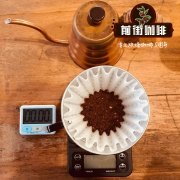New York Futures Market: transparency of a low Coffee Market in the International Coffee Futures Market in the past four years

Professional coffee knowledge exchange more coffee bean information please follow the coffee workshop (Wechat official account cafe_style)
121.6 cents per pound, the price of coffee on the New York Futures Exchange and a low in the international coffee futures market in the past four years, has halved from an all-time high of more than 121.6 cents per pound in May 2011.
In the face of the decline in the international coffee market, although some local coffee companies in Yunnan told reporters in Nandu that their coffee beans had been sold out this year, basically unaffected. However, compared with the "unsalable" market of Yunnan coffee market last year, the purchase price this year has not changed much. Yunnan coffee industry, which relies on selling coffee beans, still needs to find a way out to enhance its ability to resist risks.
A rising and falling market
The slump is not an isolated case. Global coffee trading has been fully market-oriented and prices are highly transparent, changing with price fluctuations in a few exchange markets such as the New York Futures Exchange.
The reporter combed the price of coffee on the New York Futures Exchange in the past five years and found that coffee beans, a special agricultural product, had experienced a wave of obvious ups and downs.
The price of coffee on the New York Futures Exchange has been low since the first half of 2009, trading at 105.9 cents per pound on March 10, 2009 and hovering around 140 cents per pound for the next six months. Then its price rose slowly, rising to 147.05 cents / pound on December 15, 2009, but then began to fall slowly, hovering around 130 cents / pound.
By June 2010, coffee prices began to rise in a straight line. In 2011, the world's abnormal climate greatly reduced the production of Brazilian coffee, which supplies four coffee beans to the world, and Colombia, the second largest coffee producer, was also hit by bad weather and its harvest was greatly affected. This wave of tight supply and demand has caused the trading price of coffee to soar. It even soared to a high of 304.8 cents per pound on May 3, 2011, the highest price for coffee futures in nearly 35 years. In May, the purchase price of coffee beans in Yunnan, China, also exceeded 40 yuan / kg, nearly double that of the same period last year. Although prices have fallen since then, they remained at a high of 200 cents per pound in the second half of 2011.
In 2012, with the early harvest of coffee in Brazil, Colombia and other places, production soared and the price of coffee fell on a roller coaster. Prices continued to plunge in 2012, hitting a low of 149.1 cents / lb on June 14, 2012, although prices rebounded slightly, hitting a small high of 188.85 cents / lb on July 19, 2012. its prices fell again.
In 2013, also because Brazil, the largest grower of Arabica coffee beans, has an abundant supply of coffee, the price of coffee beans has been difficult to recover so far this year. By June 20th, the price had fallen to 117.6 cents per pound, and as of Friday, it was only 121.6 cents per pound. That price has fallen back to its low level in the first half of 2009.
Important Notice :
前街咖啡 FrontStreet Coffee has moved to new addredd:
FrontStreet Coffee Address: 315,Donghua East Road,GuangZhou
Tel:020 38364473
- Prev

Is coffee good or bad for the heart? Coffee has no effect on cardiovascular disease!
Professional coffee knowledge exchange More coffee bean information Please pay attention to coffee workshop (Weixin Official Accounts cafe_style) Drinking coffee is good or bad for the heart has always been controversial On June 3, 2019, the Contemporary Medical News website (www.medicalnewstoday.com) published "Is coffee harmful to the heart?" A report presenting the latest research findings. The report noted that coffee consumption in the past
- Next

The weak development of deep processing of coffee industry in Yunnan still needs to follow the international market.
Professional coffee knowledge exchange more coffee bean information Please follow the purchase price of coffee workshop (Wechat official account cafe_style) has shrunk, deep processing is still weak, and in Yunnan, last year its coffee production exceeded 80, 000 tons, accounting for more than 98% of the total domestic output. Li Xingrong, head of Yunnan local coffee brand Aishi Coffee, told reporters in Nandu that changes in the international futures market basically had no impact on it.
Related
- Why can American refills for free? The difference between Americano and American drip pot coffee
- Being chased out of the rain in front of Starbucks?! Store: Sheltering from rain under umbrellas poses a safety hazard
- The white moonlight has changed?! Lucky launches "Big Winter Pear American"
- Hand-brewed coffee three-stage method, high-sweet and universal brewing method to share! What does the high sweet water level of hand-brewed coffee mean?
- What is the difference between raw, refined and full espresso coffee? How to extract espresso and taste good?
- A complete list of coffee bean names and their meanings! What is Yejia Shefi coffee? Where is Mantelin coffee?
- What grade does Arida Manor Kaduai coffee beans belong to? What treatment is Arida ASD slow anaerobic sun exposure?
- The milk tea cup becomes smaller?! Overlord Tea Girl launches a new "Return to Yunnan" series
- Accused of selling counterfeit and high-priced coffee beans! Well-known boutique coffee brand "Oukelao" bowed and apologized!
- How to make espresso dumplings? Can I eat coffee and glutinous rice balls together?

